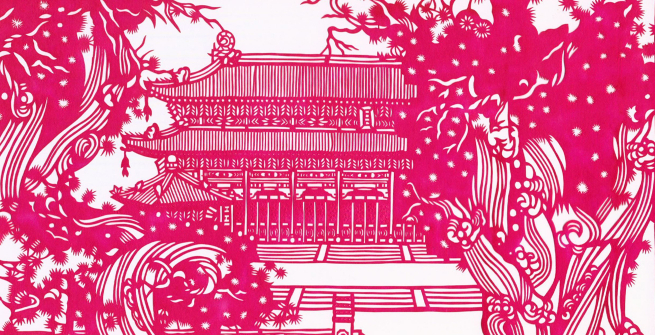The roots of Chinese paper cutting as an art form may date back to the time when paper was invented by Cai Lun of the Eastern Han Dynasty in China. This art form became popular as paper became more affordable. Traditionally, the paper cuts have been used to decorate windows and doors. They were often glued to the exterior of the windows, allowing the light to shine through the negative space, creating various patterns and designs. Usually, red paper was used for the cutouts, due to the association of red with happiness and festivity, however other colors have been used as well. Scissors or knives have been used to make the delicate decorative patterns of the paper by cutting and carving.
The Tang Dynasty was the heyday of poetry and the prosperity of paper-cutting. There are more than forty poems describing paper-cutting, which were later called "paper-cutting poems". In his poem Travelling at Pengya 彭衙行 (péng yá xíng), the poet Du Fu (712–770) has written: “暖汤濯我足,翦纸招我魂” (nuǎn tāng zhuó wǒ zú, jiǎn zhǐ zhāo wǒ hún), literally - "the warm water washes my feet, and the papercut uplifts my soul," to express his admiration for this unique art form. Chinese paper-cutting not only is rich in content, but it also has symbolism. Some designs symbolize good luck, such as a papercut based on the Chinese character”福” which means happiness and luck. The designs of children, lotus flowers, and bottle gourds suggest a happy and large family. Tortoise-patterned paper cuts symbolize longevity. Birds and animals are also familiar objects, depicted by this art form.
The photo slide presentation shows a variety of designs and patterns utilized by this centuries old art form, which has spread to other parts of our planet, each region adopting its own cultural styles.
